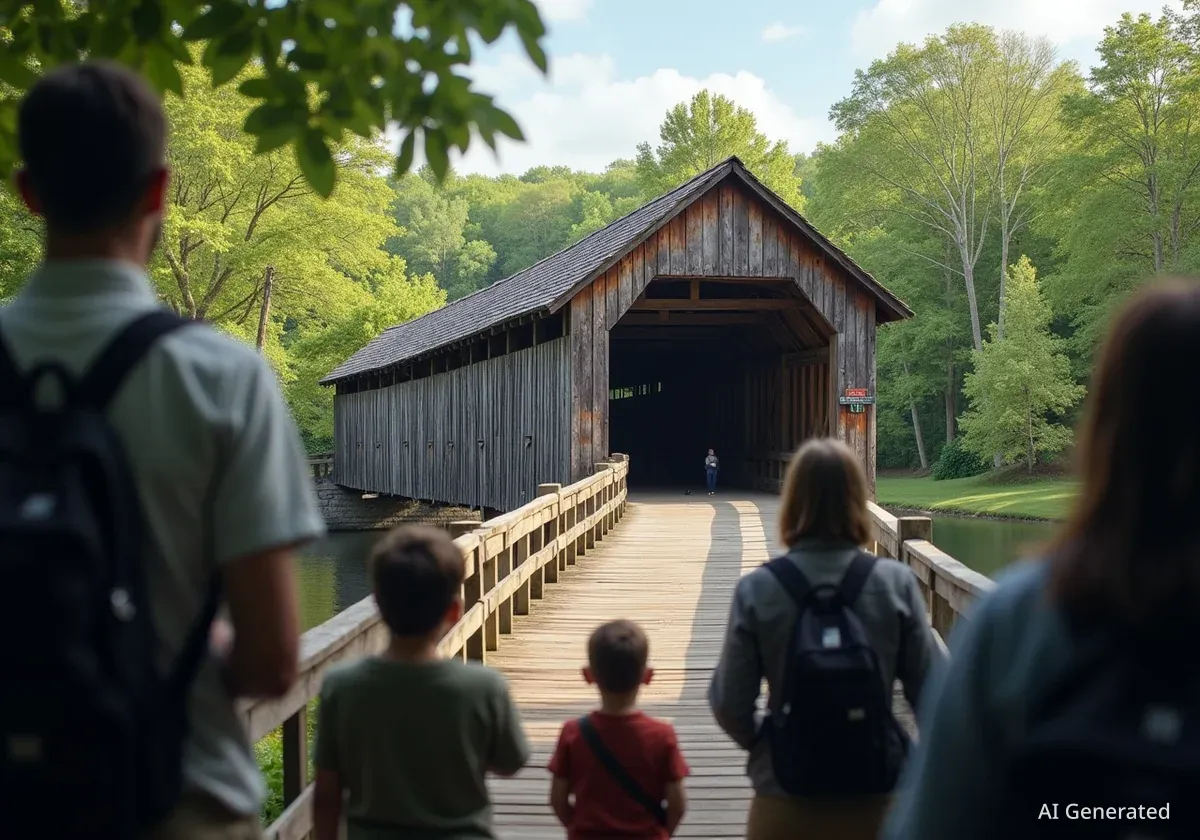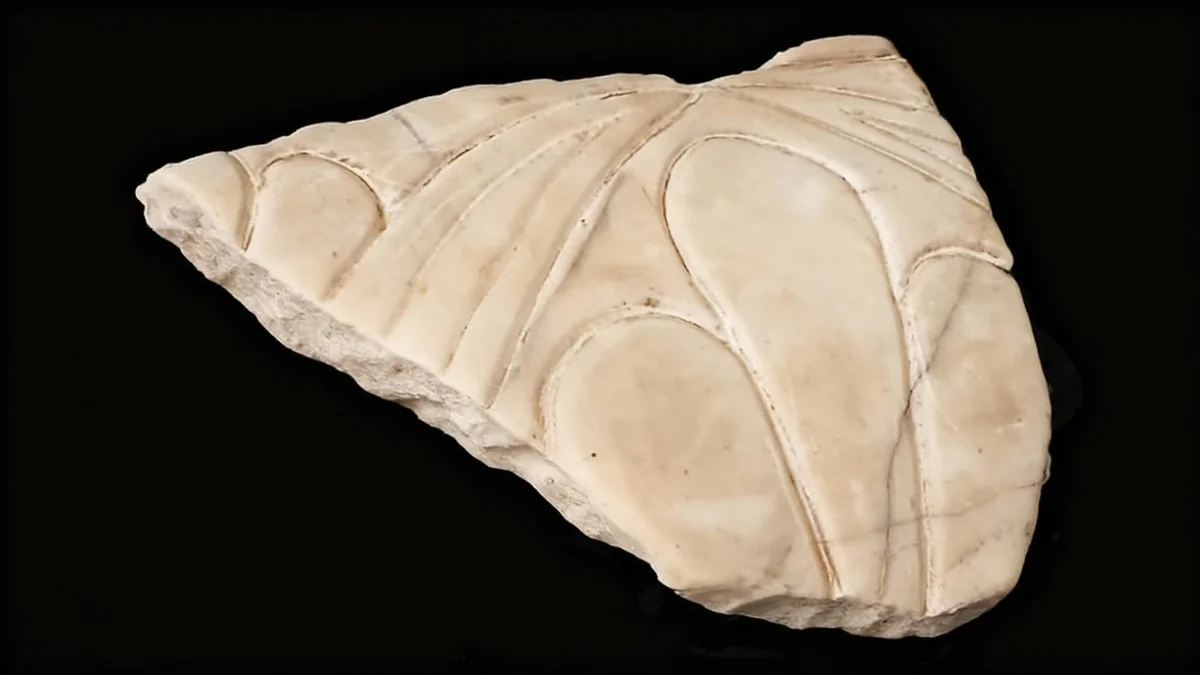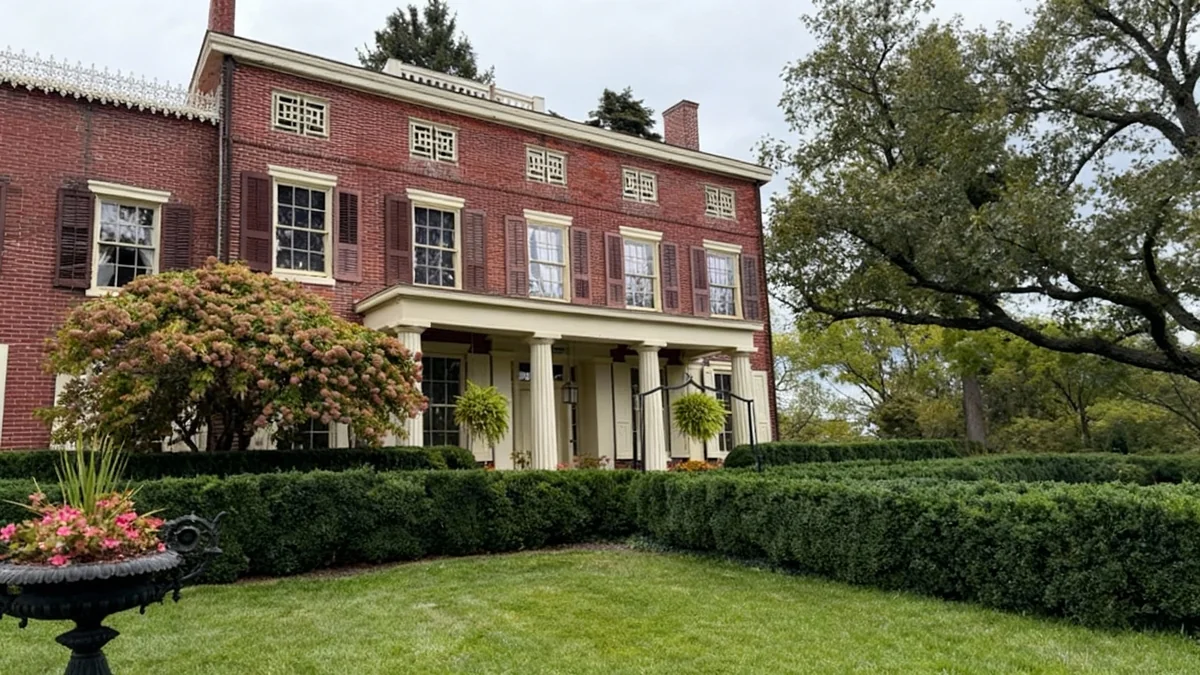The Hyde Hall Covered Bridge, a significant historical landmark in Springfield, New York, celebrated its bicentennial on Saturday with a special event at Glimmerglass State Park. This bridge, recognized as the oldest covered bridge in the United States, has connected the Hyde Hall estate for two centuries, witnessing a rich history of visitors and events.
Key Takeaways
- The Hyde Hall Covered Bridge celebrated its 200th anniversary.
- It is the oldest covered bridge in the United States.
- The bridge was built in 1825 to provide access to the Hyde Hall estate.
- Notable figures like Franklin and Eleanor Roosevelt, and Samuel Morse, have crossed the bridge.
- A public ceremony at Glimmerglass State Park marked the occasion.
Celebrating Two Centuries of History
The bicentennial celebration drew a large crowd to Glimmerglass State Park. Visitors participated in various activities designed to highlight the bridge's long history and cultural importance. These activities included horse and buggy rides, offering a glimpse into past travel methods, and presentations detailing the construction and significance of wooden covered bridges.
The event provided a unique opportunity for the community and history enthusiasts to connect with a piece of American heritage. Organizers emphasized the bridge's role in the region's development and its enduring presence.
Origins and Construction in 1825
Bridge Facts
- Year Built: 1825
- Purpose: Access to George Clarke's Hyde Hall estate
- Architectural Style: Covered bridge
- Distinction: Oldest covered bridge in the U.S.
The Hyde Hall bridge was originally constructed in 1825. Its primary purpose was to provide essential access to the Hyde Hall estate, owned by George Clarke. This estate was a prominent residence in the area, and the bridge served as a critical link for its residents and guests.
Covered bridges were common in the 19th century. The roof and siding protected the wooden structural elements from weather, extending the bridge's lifespan. This design was crucial for maintaining transportation infrastructure during that era.
A Pathway for Famous Figures
Over its 200-year history, the Hyde Hall Covered Bridge has been crossed by many notable individuals. Noel Rubinton, who serves as secretary for the Theodore Burr Covered Bridge Resource Center, highlighted some of these prominent visitors. Their passage underscores the bridge's historical relevance beyond its structural design.
"People like Franklin and Eleanor Roosevelt, Teddy Roosevelt, many people, Samuel Morse of telegraph fame, came over this bridge. Juliette Low, the founder of the Girl Scouts. Many actors and actresses over the years. Many New York governors came to this bridge."
— Noel Rubinton, Theodore Burr Covered Bridge Resource Center
This list includes several U.S. Presidents and First Ladies, a pioneering inventor, and the founder of a major youth organization. Their association with the bridge adds to its historical narrative and cultural value. It serves as a reminder of the many important moments and individuals linked to this structure.
The Enduring Legacy of America's Oldest Covered Bridge
Covered Bridge Significance
Covered bridges are an important part of American infrastructure history. They represent a period when local craftsmanship and specific engineering solutions were used to overcome geographical challenges. Their unique design protected vital timber structures from decay, allowing them to stand for centuries.
Many covered bridges have become beloved landmarks, attracting tourists and preserving a tangible link to the past. They often symbolize rural charm and historical continuity.
The Hyde Hall Covered Bridge holds a unique place in American history as the nation's oldest surviving wooden covered bridge. Its continued existence for two centuries is a testament to its original construction and ongoing preservation efforts. The bridge stands not only as a functional crossing but also as a historical monument.
Its bicentennial celebration is more than just an anniversary. It is a recognition of its role in local and national heritage. The event helps ensure that future generations understand and appreciate this significant landmark and the stories it holds.
Preservation Efforts and Future Outlook
Maintaining historical structures like the Hyde Hall Covered Bridge requires continuous effort. Preservation initiatives are vital to protect these assets from natural wear and environmental factors. These efforts often involve specialized restoration techniques to maintain the bridge's original integrity.
The celebration also served as an opportunity to raise awareness about the importance of historical preservation. Community involvement and support are crucial for ensuring the bridge remains a landmark for many more years. Its future depends on continued care and public appreciation.





